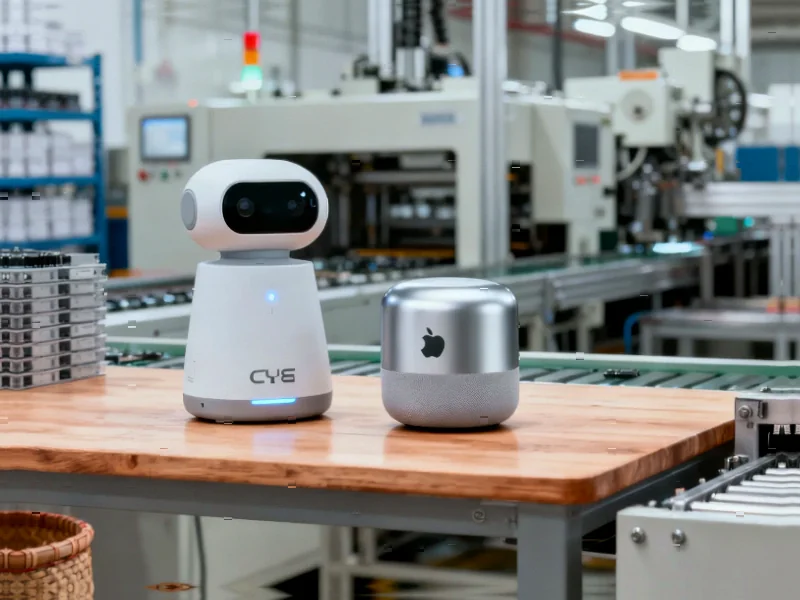The Trust Gap in Industrial AI Adoption
While artificial intelligence continues its rapid integration across industrial sectors, a critical challenge threatens to undermine its potential: the trust deficit. Recent global research reveals that despite widespread AI usage and recognition of its benefits, less than half of users genuinely trust the technology. This trust gap becomes particularly problematic in industrial computing environments where AI decisions directly impact operational safety, supply chain reliability, and critical infrastructure.
Table of Contents
- The Trust Gap in Industrial AI Adoption
- Regulatory Response and Compliance Requirements
- The Business Case for Trustworthy AI
- Building Trust Through Technical Excellence
- The Governance Imperative in Industrial Settings
- Transparency as Operational Advantage
- Future Directions: The Trust-Enabled Industrial Ecosystem
The industrial sector faces a unique trust challenge. Unlike consumer applications where AI errors might cause inconvenience, industrial AI failures can result in significant financial losses, environmental damage, or safety hazards. This elevated risk profile means that trust isn’t merely a nice-to-have feature—it’s a fundamental requirement for adoption at scale., according to industry developments
Regulatory Response and Compliance Requirements
Global regulators are rapidly establishing frameworks to address AI trust concerns. The EU Artificial Intelligence Act categorizes many industrial AI applications as high-risk, requiring comprehensive technical documentation covering model design, risk management protocols, and data provenance. Similar regulatory movements are emerging worldwide, with industrial applications receiving heightened scrutiny due to their potential impact on public safety and economic stability.
For industrial computing professionals, this regulatory landscape means that AI governance can no longer be an afterthought. Documentation requirements now extend beyond basic functionality to include detailed explanations of training data sources, model limitations, and failure mode analyses. Companies that proactively address these requirements are finding they not only achieve compliance faster but also build stronger trust with customers and partners.
The Business Case for Trustworthy AI
Beyond regulatory compliance, there’s a compelling business argument for investing in AI trustworthiness. Industrial organizations are discovering that transparent, well-documented AI systems command premium pricing and achieve faster adoption. In sectors like manufacturing, energy, and logistics, where decisions have multimillion-dollar implications, the ability to explain and verify AI recommendations becomes a competitive differentiator., according to industry developments
The financial impact extends to enterprise valuation. Investors increasingly view AI systems that lack proper documentation and audit trails as compliance liabilities rather than strategic assets. This shift means that organizations prioritizing AI governance are likely to see better financing terms and higher market valuations.
Building Trust Through Technical Excellence
Establishing trust in industrial AI requires a multi-faceted approach that combines technical rigor with transparent processes. Several key practices are emerging as trust-building essentials:
- Comprehensive Documentation: Detailed records of model development, training data characteristics, and validation procedures
- Audit Trails: Complete tracking of model decisions and modifications throughout the system lifecycle
- Human Oversight: Clear protocols for human review and intervention in critical decision processes
- Bias Mitigation: Systematic approaches to identifying and addressing potential biases in training data and algorithms
The Governance Imperative in Industrial Settings
Leading industrial organizations are establishing formal AI governance structures to ensure consistent oversight. These governance frameworks typically include cross-functional committees with representation from operations, legal, compliance, and technical teams. Their mandate extends beyond initial deployment to include ongoing monitoring, performance validation, and risk assessment., as earlier coverage
The most effective governance approaches integrate AI oversight into existing quality management and safety systems rather than treating it as a separate concern. This integration helps ensure that AI systems meet the same rigorous standards applied to other critical industrial technologies.
Transparency as Operational Advantage
In industrial computing environments, transparency isn’t just about regulatory compliance—it’s about operational excellence. Systems that provide clear explanations for their recommendations enable better human decision-making and faster problem resolution. When equipment maintenance AI can explain why it’s predicting a failure, maintenance teams can verify the reasoning and take more confident action.
This explanatory capability becomes particularly valuable during incident response. When systems can articulate their decision logic, troubleshooting becomes more efficient, and root cause analysis more accurate. The result is reduced downtime and improved operational reliability.
Future Directions: The Trust-Enabled Industrial Ecosystem
As industrial AI evolves toward more autonomous operation, the trust requirement will only intensify. The emerging “agent economy” in industrial settings—where AI systems negotiate with suppliers, optimize energy usage, and manage complex logistics—demands robust trust mechanisms. Organizations that invest in building trustworthy AI infrastructure today will be positioned to capitalize on these advanced applications tomorrow.
The path forward requires balancing innovation with responsibility. Industrial computing leaders recognize that the ultimate measure of AI success isn’t technical sophistication alone, but the ability to deploy that sophistication in ways that earn and maintain stakeholder trust. In this context, governance becomes not a constraint on innovation, but its essential enabler.
The trust imperative represents both a challenge and opportunity for industrial computing. Organizations that approach AI implementation with transparency, rigorous governance, and clear accountability will likely emerge as leaders in the next phase of industrial digital transformation.
Related Articles You May Find Interesting
- Unlocking Quantum Magic: How Measurement-Only Circuits Reveal Hidden Computation
- Quantum Cooling Breakthrough Paves Way for Ultra-Low Temperature Microwave Techn
- Cellular Signaling Patterns Drive Gene Expression Through mRNA Stability Mechani
- Real-World Encounters Trump Digital Echo Chambers in Predicting Election Outcome
- GM’s Strategic Pivot: How EV Production Adjustments Fuel Optimistic Financial Ou
This article aggregates information from publicly available sources. All trademarks and copyrights belong to their respective owners.
Note: Featured image is for illustrative purposes only and does not represent any specific product, service, or entity mentioned in this article.



